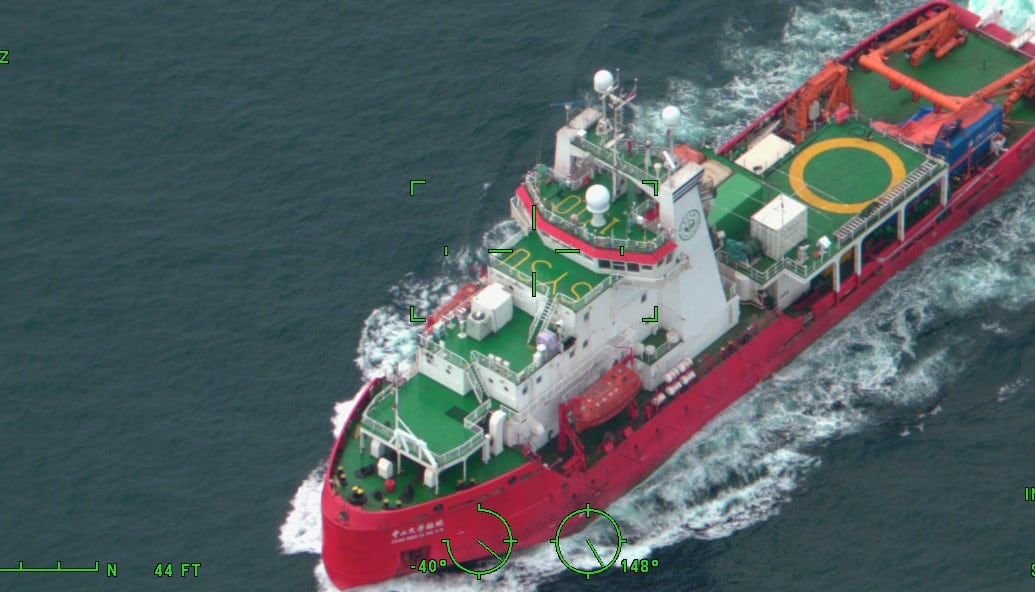The U.S. Coast Guard responded last week to two Chinese research vessels that entered U.S. Arctic territory, amid what Coast Guard officials called “increased activity” by such ships in the region in recent years.
The Coast Guard deployed a C-130J Hercules aircraft from Air Station Kodiak in response to two Chinese research vessels, Ji Di and Zhong Shan Da Xue Ji Di, transiting the Bering Sea on Aug. 5, according to a release.
The following day, on Aug. 6, the cutter Waesche responded to the Zhong Shan Da Xue Ji Di as it maneuvered above the Arctic Circle.
“The U.S. Coast Guard’s responses are intended to counter malign activities, defend sovereign interests, and promote maritime conduct consistent with international law and norms,” the Coast Guard said in the release.
The Coast Guard said it is currently monitoring five similar Chinese vessels in and around the U.S. Arctic.
“The presence of these vessels is consistent with a three-year trend of increased activity from Chinese research vessels operating in the U.S. Arctic,” the Coast Guard said in the release. “Last year, three Chinese research vessels conducted research operations north of the Bering Strait.”
Joint military drills by China and Russia in the region in recent years have also prompted concerns from U.S. officials. In the summer of 2023, Chinese and Russian military forces conducted joint training exercises in the Bering Strait.
“This kind of increasing levels of military cooperation is new. Certainly, it’s new within and around Alaska,” Iris A. Ferguson, the deputy assistant secretary of defense for Arctic and Global Resilience, said last December at a Center for Strategic and International Studies event. “Just this past summer, right after we released our department [Arctic] strategy, we saw a joint bomber patrol off of the coast.”
Increased Russian and Chinese activity in the Arctic has also drawn concerns from international allies. Earlier this month, NATO deployed a maritime task group made up of Dutch, Norwegian, Portuguese and German vessels to patrol Arctic waters, while Denmark recently purchased a number of U.S.-made long-range maritime drones for Arctic surveillance.
Meanwhile, the Coast Guard, currently the only U.S. surface presence in the region, is short on ships. It has been in dire need of icebreakers for years, prompting an April 9 executive order by President Donald Trump to improve maritime security in the Arctic.
On Sunday, the Coast Guard commissioned its first polar icebreaker, the cutter Storis, in 25 years. The Storis is a refurbished oilfield supply ship, formerly known as the Aiviq.
“This region is undergoing monumental change. Sea ice is receding. New trade routes are opening. Vast reserves of natural resources are becoming accessible. And our adversaries are moving fast to assert control,” U.S. Sen. Dan Sullivan, R-Alaska, who commissioned the vessel, said in a release.
“These are warning signs. If we’re not ready to lead in the Arctic, others will — and they’ll be happy to do it for us," Sullivan said.
Zita Ballinger Fletcher previously served as editor of Military History Quarterly and Vietnam magazines and as the historian of the U.S. Drug Enforcement Administration. She holds an M.A. with distinction in military history.




